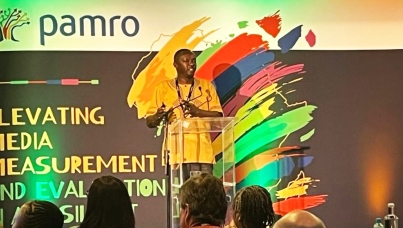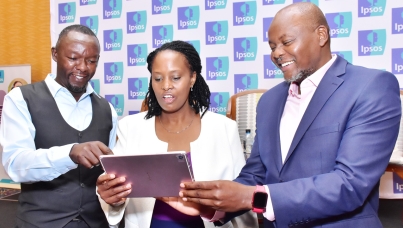Why your ad is not the talk of social media and others are
 By Kui Kariuki
By Kui Kariuki
The Kenya Media Establishment Survey 2022 launched in Nairobi recently, shows the central role social media plays in the lives of people. The study indicates that internet use has more than tripled – from 13% to 46% driven by social media.
It also reveals that social applications such as Facebook, Twitter, and Google are debasing as newer applications like TikTok, Telegram, Betting applications and Opera browsing platforms become more attractive to the youth.
With increasing popularity, social media has become an effective tool for advertising. It allows people to freely interact with others and offers multiple ways for marketers to reach and engage with consumers.
The platforms have not only become a space where advertisers use consumers’ social connections to sell positive brand messages, but also spaces where consumers can speak back loudly.
The logic behind social media emerging as an effective advertising type/tool is that social media users have made the advertiser’s job much easier and cheaper. They do the selling and telling through their influence on others.
But even as advertisers dominate the platforms with their campaigns, only some advertising gets talked about on social media and becomes famous. So, where do brands and advertising fit into what we talk about?
It turns out, very little. Even among followers of a brand's Facebook page, only 0.5% ever specifically talk about them. And, for advertising, Ipsos Global Trends data paints a less apathetic and more negative picture, with people more than twice as likely to agree online advertising is “annoying” rather than a source of information to “share with colleagues and friends” (73% vs. 30%).
Even with annoyance and rare presence in our communication, there is evidence that advertising that gets talked about has the potential to deliver unpaid or “earned” reach and therefore more efficient for marketing investments. In The Long and the Short of It, Les Binet and Peter Field observed that “Fame” campaigns, those that “inspire people to share their enthusiasm on and offline”, are four times as efficient in generating Excess Share of Voice (ESOV) than “non-Fame” campaigns.
With this type of evidence, we see a seductive proposition for marketers. A Fame challenge that very few achieve, with high potential, earned media rewards that the aptly named communications and advisory company, Contagious, coins very well: "You know what's cooler than paying for advertising? Not paying for advertising."
It is therefore important to analyze the outcomes for ads that are talked about and those that are not talked about to identify the characteristics and types of responses the more successful campaigns attract, to inspire future campaign planning.
At Ipsos, we have looked at the relationship between the volume of mentions for a diverse range of online video campaigns measured in our social intelligence platform, Synthesio, and the creative responses they achieved in our creative evaluation solution, Creative Spark.
Our analysis of several campaigns using Synthesio and Creative Spark led us to identify four key traits that increase the chances people will talk about an ad online.
First is the cultural impact of the ads. People claim not to be positive about the advertising they view. Nobody likes to be sold to. So perhaps it is not surprising that one of the key variables we identified to separate the ads that generate conversation online is when they reflect the broader world and culture around them, rather than just their products. So, create videos that reflect the world and icons around us beyond the brand itself.
Second, creative bravery; surprise people by delivering genuinely unique and divergent creative. We know that non-conventional creative considered to go outside category codes and norms is more effective at encoding branded memories, with non-conventional ads 20% more likely to feature in the top quintile of our database for Brand Attention than conventional ads.
This would suggest your advertising is more likely to be remembered if it is truly brave and unique work. No wonder ads described as “unique” or “surprising” were more likely to be talked about online. It is these ads that at times can cross the Rubicon by delivering a content experience rather than an “ad”.
People are also looking at positive feelings that make them feel good about the experience after viewing the video. Many marketers would likely agree that if you want to influence someone it’s better, they feel good about your communication than not, and Ipsos data bears this out, where we have observed that ads that build a positive immediate emotional response over time are more likely to be remembered than those that are comparatively flat.
Finally, don’t be afraid to create controversy. You don’t need to be liked by everyone. If you create a positive feeling and speak to an issue your target audience cares about, it’s OK if some people hate your video, as it shows you have stood out from the noise.
While each of these traits can be considered in your creative strategy, they are united by a key principle worth consideration. Whether you focus on developing unique creative, speak to a wider issue in society, or represent a sense of nostalgia with cultural icons, all these traits ladder up to delivering an experience truly worthy of discussion that the brand plays a part in.
In conclusion, if you want people to talk about your communication, think about delivering an experience worthy of discussion that your brand is part of, rather than an ad that simply sells your product.
The writer is a Senior Research Manager, heading the Brand Health Tracking and Creative Excellence Department in Ipsos in Kenya.



